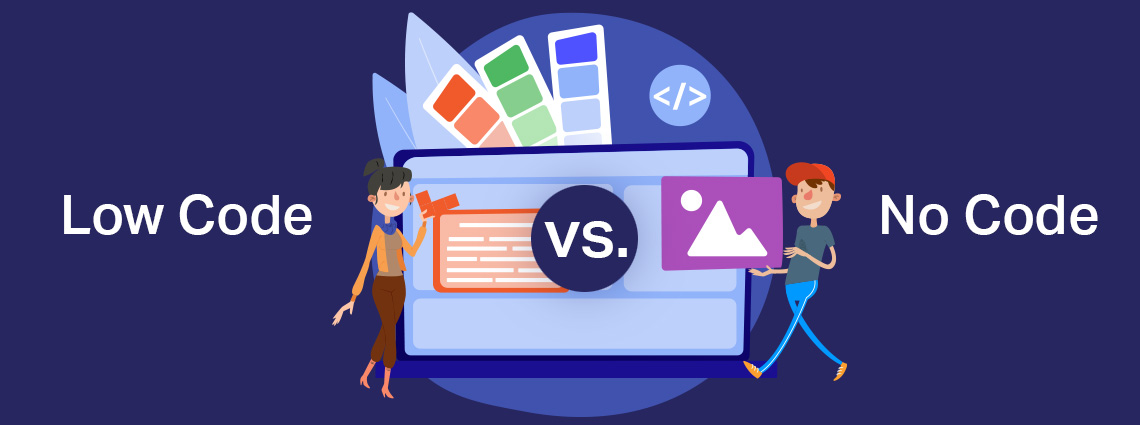Low-code and no-code platforms let businesses and individuals with little coding expertise create software applications. While low-code platforms require some coding knowledge, no-code platforms don’t require any.
Experts estimate that 75% of businesses will embrace no-code technologies in the next eight years. IT skill gaps and the growing need for software app development are driving the uptick in adoption rates.
Projections also state that 65% of software development will be through low-code and no-code platforms by 2024. But the concept of no-code technologies may cause those unfamiliar with it to scratch their heads. Let’s review what these platforms are below.
What Are No-Code Technologies?
Low-code and no-code platforms use graphical interfaces and tools to help those without coding experience build software applications. If you’ve ever worked with a content management platform or blogging software, you’re already familiar with graphical interfaces.
With low-code and no-code platforms, you work within a graphical interface and use drag-and-drop tools. So, if you want to add specific design elements, you can drag and drop them from a menu or list.
However, with low-code options, you can still use basic coding skills to develop your apps or tweak certain elements. For instance, you might be able to manipulate the color, size, or media source. These platforms are best if you have some coding knowledge.
With no-code systems, you don’t need to write any code. These options are best for businesses and individuals without coding skills or knowledge.
What Are the Benefits of These Platforms?
Finding and keeping skilled software developers are significant challenges for many businesses. A recent survey reveals that 53% of software developers and IT professionals believe it’s the biggest hurdle for companies to overcome.
Keeping talented software developers is an obstacle for 46% of companies, and 31% struggle to find enough time to get coding work done. Low-code and no-code development platforms let companies develop software without the long search for talent.
These platforms enable the rise of citizen developers or those interested in software development without coding expertise. Learning how to code can take months or years to master. This process can also involve expensive certifications and degrees.
But with low-code and no-code platforms, businesses can involve more non-technical staff. Plus, these companies can efficiently meet more client deadlines and take on additional work.
Using Low-Code and No-Code Platforms
It’s not a weakness or a business failure to implement no-code technologies. If anything, it shows a willingness to adapt and remain agile in a challenging environment. Low-code and no-code platforms also introduce non-technical employees to the world of software development.
They can expand their resumes and professional experiences without going back to school or shifting their entire careers. With more companies considering or embracing these platforms, those that don’t could become outmaneuvered or lose out to a competitor.
Some examples of low-code and no-code platforms include Looker 7, Sisense, Shopify, and Quickbase. If you’re short on IT talent and want to meet client expectations, consider low-code and no-code platforms as viable solutions.

